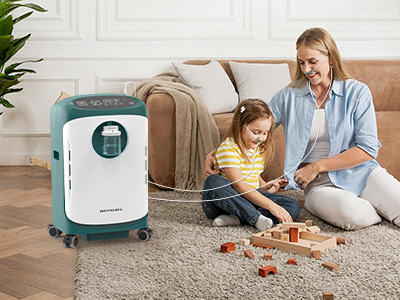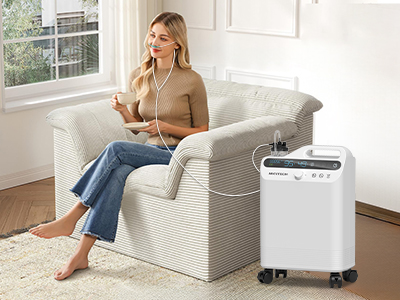31 Oct 2025
There’s something unexpectedly heartwarming about shared oxygen therapy. Beyond the clinical hum of machinery and the gentle hiss of airflow, it weaves a quiet thread of connection. Families who once scattered to different rooms now gather around a shared device, rediscovering the rhythm of togetherness—one deep, steady breath at a time.

Breathing Together: The Unseen Bond
Breathing is the most ordinary miracle we perform every day. But when it becomes a collective effort, it takes on new meaning. Shared oxygen therapy transforms the act of inhaling into an intimate ritual—a reminder that health isn’t just personal; it’s communal.
When one family member starts oxygen therapy, everyone becomes part of the routine. Someone fills the humidifier bottle, another checks tubing, and someone else jokes that the concentrator sounds like a mini jet engine. These moments—mundane yet oddly precious—become the glue that holds the family closer.
The air may come from a machine, but the care is purely human.
Turning Medical Moments into Family Time
Who said oxygen therapy can’t come with laughter? Shared sessions often evolve into a kind of family hangout, where conversations flow as freely as oxygen. Picture it: a parent doing a crossword puzzle while connected, a child curled nearby with a tablet, and someone else brewing tea in the background. The once intimidating machine now hums like a household pet, familiar and comforting.
Instead of isolating the person needing therapy, it creates a gathering point—a subtle nudge for family members to pause, sit, and breathe alongside. Even five minutes of shared stillness can feel like a luxury in our overcaffeinated world. Oxygen, as it turns out, isn’t the only thing flowing; empathy and patience do too.
The Emotional Alchemy of Caregiving
Caregiving isn’t glamorous. It involves patience, repetition, and sometimes, the noble art of untangling tubing. But shared oxygen therapy changes the narrative—it transforms caregiving from obligation to collaboration. Each task, no matter how small, becomes a tangible way to show love.
There’s a quiet pride in adjusting flow rates, ensuring filters are spotless, or reminding someone to take slow, steady breaths. It’s in these gestures that families rediscover tenderness. When everyone participates in the process, oxygen therapy stops being “Mom’s routine” or “Dad’s medical thing” and becomes our collective commitment to wellness.
It’s teamwork at its purest—without scoreboards, but with plenty of heartfelt victories.

How Shared Routines Strengthen Family Dynamics
Consistency is comforting, and shared therapy time builds an invisible scaffold for daily life. The concentrator becomes the metronome of the household—a subtle reminder to slow down, breathe deeply, and check in with one another.
When a family syncs around oxygen therapy, routines naturally evolve. Meal times adjust, noise levels soften, and stress ebbs. Children learn empathy early; adults rediscover patience they thought they’d lost somewhere between deadlines and grocery lists. In the process, a new kind of intimacy takes root—steady, gentle, and real.
Even the machine’s steady whoosh can become the background music of unity, the modern equivalent of a fireplace crackle.
Making Shared Therapy Feel Less Clinical and More Cozy
Let’s be honest: no one wants their living room to look like a hospital ward. But with a little creativity, oxygen therapy can blend seamlessly into home life. A compact concentrator tucked beside a cozy armchair, soft lighting, perhaps a playlist of mellow tunes—suddenly, it feels more like a spa ritual than a medical procedure.
Some families even turn it into mindfulness time. Breathing exercises, gratitude reflections, or quiet reading can elevate the experience from necessity to nourishment. It’s all about reclaiming the space—and the experience—as something warm, human, and shared.
Because healing, when shared, feels a lot less like treatment and a lot more like togetherness.
Keywords: Oxygen Therapy
Originally published 31 Oct 2025, updated 31 Oct 2025.